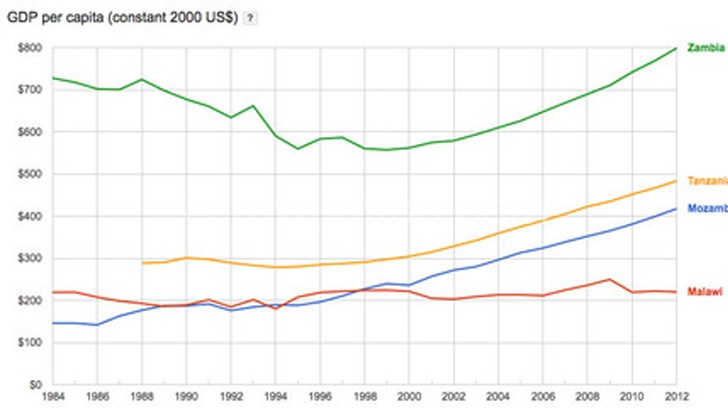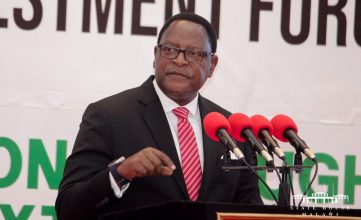WB cuts 2015 GDP growth rate further
The World Bank has painted further a gloomy economic outlook for Malawi by revising downwards the country’s real gross domestic product (GDP) growth rate to 2.8 percent from its earlier estimate of 5.1 percent made in February this year.
The revised rate of 2.8 percent is 0.5 percentage points lower than the recently revised rate of 3.3 percent by the Bretton woods sister institution, the International Monetary Fund (IMF).
As such, the latest revision in real GDP growth rate by the bank is one of the significant cuts in Malawi’s real output in recent years, following a slash in 2012 from 4.3 percent to a paltry 1.8 percent.
In 2014, Malawi recorded a growth rate of 5.7 percent, according to World Bank figures.

“The downward revision reflects the impact of weather shocks on the production of maize and other key crops, uncertainty to the economic outlook, and a weak fiscal environment,” says the bank in its latest biannual publication Malawi Economic Monitor.
The prevailing weak fiscal environment is being manifested by resurgent rate of inflation, which is hovering around 24 percent, continued high lending rate in the banking sector and a weakening local currency which has largely triggered high commodity prices on the market, eating into the purchasing power of many average Malawians in the process.
Economic commentator Gilbert Kachamba on Tuesday threw his weight behind the World Bank analysis on the revised GDP growth rate figure, warning that the move would entail low production levels by most producing firms as there will be less economic activity to stimulate enough demand for goods and services.
“In turn we may see most producing entities downsizing their staff and operating below capacity utilisation and all this could culminate into a massive unemployment rate for the country,” warned Kachamba.
According to the World Bank analysis, the agriculture sector is this year expected to contract by two percent while industry is expected to grow by 4.2 percent, and services by 5.1 percent.
“Both the weather shocks and the macroeconomic imbalances that Malawi is currently experiencing would be causing instability on their own, but together the impact is amplified,” reads the World Bank analysis.
Commenting on the possible consequences of revised GDP growth rate to 2.8 percent, the bank says with such a modest rate of economic growth, Malawi is expected to see an increase in the proportion of households living under the international poverty line over the year.
It estimates that the proportion of poor households living under the new international poverty line of $ 1.9 (about K640) per day is expected to increase marginally from 69.7 percent in 2014 to 69.9 percent in 2015.
According to the World Bank assessment, Malawi is facing a twin crisis arising from two separate issues of vulnerability to climate shocks and fiscal management challenges.
The vulnerability to climate shocks, according to the bank, is being manifested in the declining growth rate and deteriorating poverty outcomes while existing fiscal pressures are being exacerbated by pressure from weather shocks.
Chief Economic Advisor to the President Collins Magalasi told Business Review recently in Mangochi that government is working to restore macroeconomic balance and remained optimistic that the country will revive the off-track programme with the IMF, the Extended Credit Facility (ECF). n





